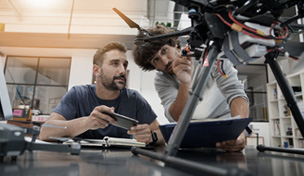Keywords: Biotechnology
Market Overview
Continuous back bone “continuum” robots are prominent within the research community for applications within medicine, nuclear reactors, and aero engines. Within medicine, these robots are used within endoscopic procedures and material elasticity can result in significant inaccuracy in operations. Current methods to overcome this issue include preloading the tendon prior to operation to improve outcomes. These methods include modeling forces to determine preload, but these often do not account for tendon-induced backbone compression and tendon extension. There is a need to improve tension methods for tendon-driven continuum robots (TDCRs). A Clemson University researcher has developed a technology that uses a modeling method to produce optimal preload tension that takes account of tendon-induced backbone compression and tendon extension. This design further improves current methods by not requiring tension in order to determine optimal preload, extending the life-span of these robots.
Applications:
Surgical Robots
Technical Summary:
The proposed design incorporates a modeling method to produce the optimal preload when the backbone compresses and tendons extend for tendon driven continuum robots (TDCR). Their approach uses simple beam bending theory and exploits geometric symmetry in the design of TDCRs. Furthermore, their design does not require the estimation of robot material properties or tendon extension. With this modeling method, tendons do not need to be under tensions when the robot is in use and preload can be done in real time, removing the need for complicated algorithms used in other methods.
Advantages:
• Technology provides method for determining optimal preload without needing to keep robot in tension.
• Preload happens in real time which permits adjustment as needed.
• Does not require estimation of robot material properties or tendon tension sensing.
Technology Overview
State of Development
Proof of Concept
Patent Type
Provisional Patent-Pending
Category
CURF Reference No.
2024-048
Inventors
Dr. Ian Walker, Dr. Manu Srivastava
For More Info, Contact:
For more information, please email curf@clemson.edu, and put technology ID “2024-048” in the subject line.
Contact
Latest News from CURF
Stay up-to-date with the latest trends in the innovation and research industry. Sign up for our newsletter to see how CURF is making a difference and impacting the economy where we live.









